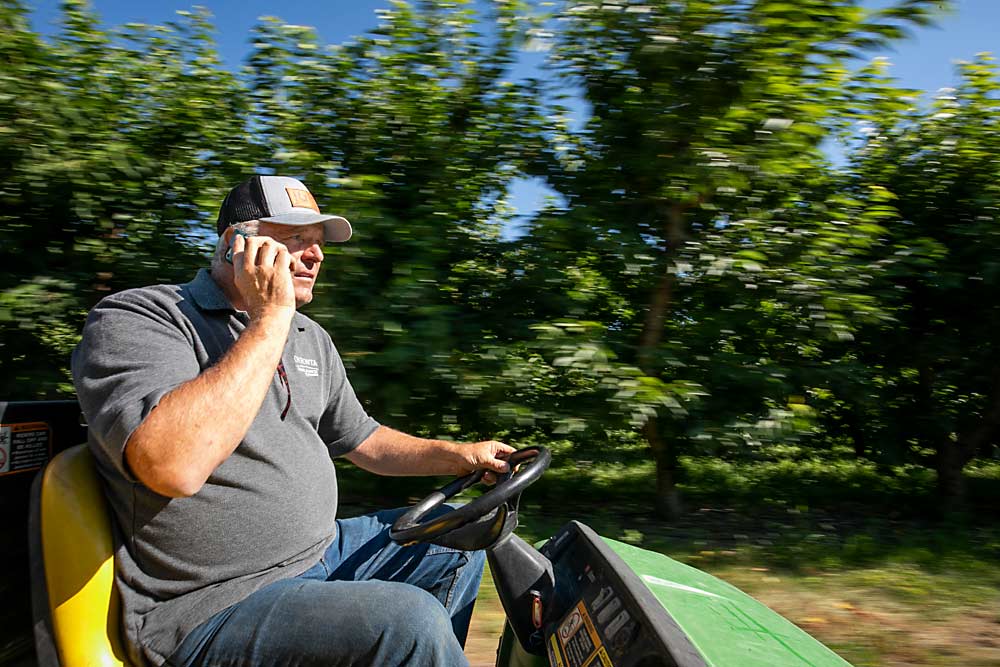
Cherry harvest is typically an all-hands-on-deck event for family farms.
But in July, Kent Karstetter was managing the harvest logistics for 150 acres of cherries — and running everywhere — because his two sons, Mitchell and Brady, were working around the clock to harvest their hay in Quincy, Washington.
“We do about 1,000 acres of hay, with four cuttings; 1,500 acres of cover crops in the spring; and have about 1,000 acres of corn ground,” said Mitchell during a follow-up interview in September — from the cab of his tractor, where he was spreading compost produced by the dairies he supplies with straw and feed. “There’s times when it’s hard. Now we are bailing hay and short on people because we are picking apples.”
The diversification complicates the family business, sure, but it’s also allowed the third-generation farmers to build their own assets with a lower barrier to entry and keep crews and equipment busy all year round.
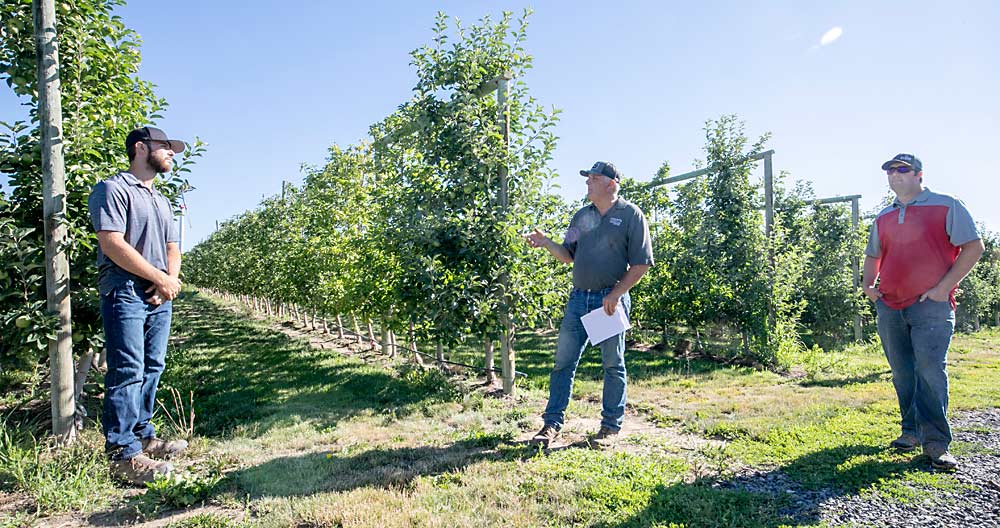
Mitchell, now 30, loves the orchard business, but even as a teen who wanted to farm, it was clear that a family business the size of RJK Farms — his father, grandfather and uncle’s business — couldn’t support two more full-time farmers. They didn’t have enough experience to take on management roles in the orchard, Kent said, but some alfalfa acreage he had recently purchased gave the boys the opportunity to get their own start.
“Me and my brother have built our own business, and it’s been awesome,” Mitchell said. “Now, we’re buying into the orchard, and we’re looking at buying a block that’s just us.”
Seeing his sons’ success building their row crop business also inspired Kent to grow his, so that the orchard business could have the scale for them to eventually join.
“I started buying up almost every piece of ground that came up for sale,” Kent said. “People will say, ‘Well, your boys are spoiled because you help them.’ But I say, ‘My boys made me a lot of money, because I was buying ground for $4,000 to $10,000 an acre, and now it’s worth $15 (thousand) to $20 (thousand).’ If these boys didn’t want to be in it, my brother and I never would have kept buying.”
The Karstetters shared their unusual family business path and their insights into Honeycrisp management with the International Fruit Tree Association in July.
A family of businesses
While they were quite young, Kent Karstetter introduced his sons to the idea that farmers need to know how to run a business. When Mitchell was about 13, his dad put him in charge of an old forklift, which he could rent to growers who needed one for a short term, and he had to repair it as needed. Kent, who also worked as a fieldman for McDougall and Sons at the time, introduced Mitchell to growers and helped him haul it for the first few years.
“Honestly, people still call me for it,” Mitchell said with a laugh. “Having something that was mine, seeing the money come in and go out — like when you have to put tires on it — that’s really helped me and my brother to be successful, to have a dad that took that time and gave us that experience.”
Kent told the tour group that it’s always been important for his sons “to have skin in the game.”
“When it hits your wallet, it means a lot more than when it hits somebody else’s wallet,” he said.
But the ever-rising value of farms makes it increasingly difficult for the younger generation to buy in, he said. It’s something the family is currently navigating, as Kent’s father, Richard, died last year, and he and his brother, Jerry, are trying to buy out the shares of the orchard their father left to siblings who have been inactive partners in the business.
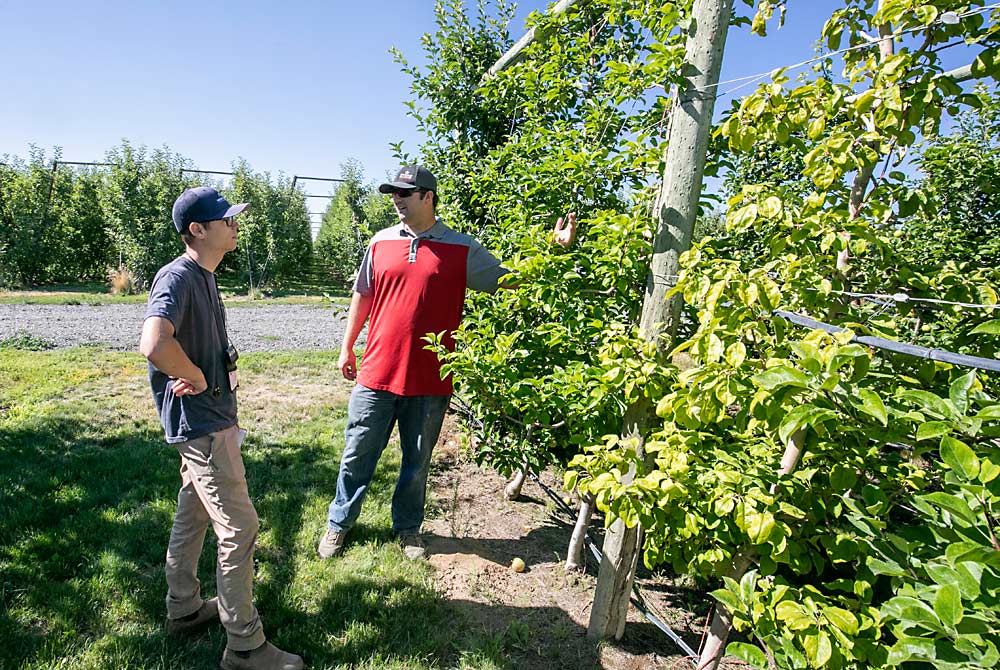
Few family farms remain in the Quincy area, which is now home to a lot of investor-owned corporate farms, said Dale Goldy, a neighboring grower who also served as an IFTA tour host.
“Your business today is so much different than when you were their age, and they have to be ready for what they are going to deal with going forward,” Goldy said as he talked with Kent. “A really key element in what I see the three of you doing is managing risk.”
Diversification is one answer to that, Mitchell said afterward. With the row crop business that he and Brady have built over the past decade or so, they’ve been able to build capital as young farmers, in a way that seems nearly impossible in tree fruit today. It helps them offer employees full-time work, driving tractors in the row crops in the summer and pruning orchards in the winter, and the truck drivers can haul straw in the morning and apples in the afternoon.
And they got creative. Each August, they take their crews and hay equipment east and work with dryland farmers to bail up the straw remaining after grain harvest. Then, they sell the straw to nearby dairies.
“That’s a niche we’ve found, and it’s in between apples and cherries,” Mitchell said.
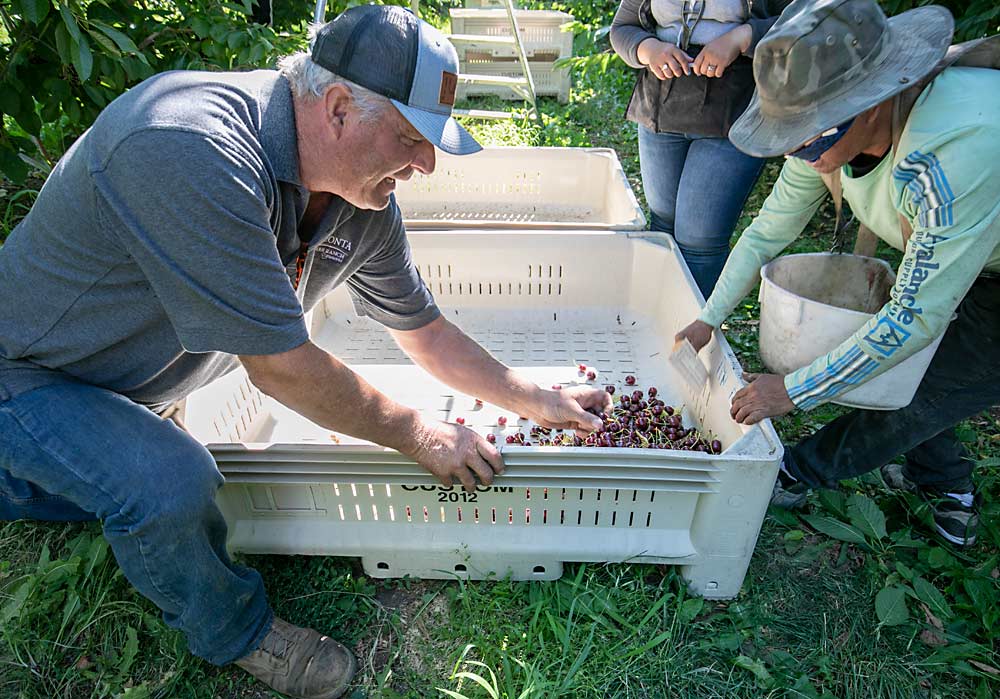
Building this diversified business means there isn’t much of a break between harvests anymore. So, Kent said he insists that his sons and managers take vacations, even though there’s always more to do. Everyone has the experience to cover for each other now.
“I say, ‘You guys need to get the heck out of here and just shut things off,’” he said. “Turn your phone off for four or five days, just to kind of recalibrate yourself.”
Planting orchards
Another successful niche: Mitchell also uses his GPS-enabled tractors to plant orchards and vineyards for smaller growers around the region.
“I have to keep this equipment busy, and we’re not using it until May,” he said. A couple of years ago, he connected with pear growers in the Wenatchee River Valley, and now, every spring, he plants a few small projects for growers who don’t otherwise have access to that technology, he said.
It’s ballooned into another business, one that connects Mitchell to orchardists around the region.
“I get really excited about it, knowing you are helping people, and I love going up later and seeing the orchards we planted,” he said.
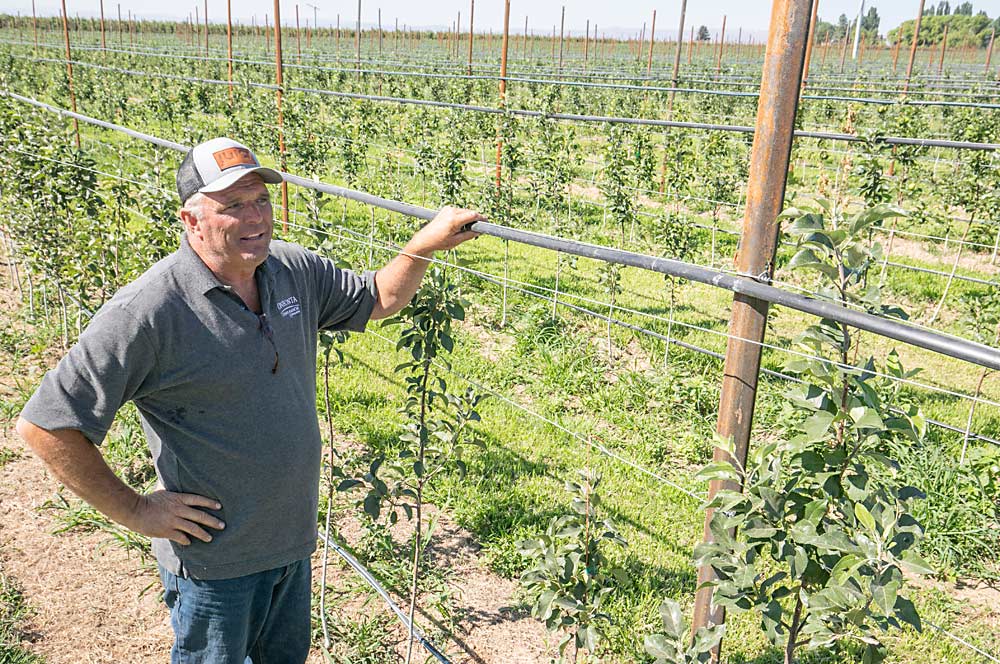
As for their own orchards, Mitchell and Kent are now planting everything at a 10-by-2 spacing that will be managed as an automation-ready vertical wall. Inspired by Goldy, they’ve also pushed the trees to grow taller in their on-farm nursery before planting, so they won’t have to push them as hard in the orchard.
They aim to reduce their battle with bitter pit in Honeycrisp, and they shared some insights with the tour group who visited a 10-year-old block planted at 10 feet by 2.5 feet. Changing up the irrigation and nutrition approaches has helped, Mitchell said, as they target the happy medium between deficit irrigation and overwatering, so that the trees still take up nutrients.
With the new planting approach, they hope to keep the tree in balance from the start and get into high-quality production as quickly as possible.
by Kate Prengaman

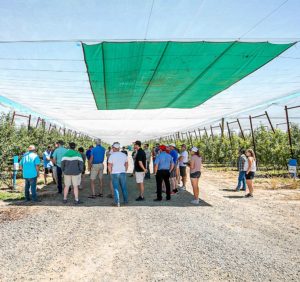





Leave A Comment